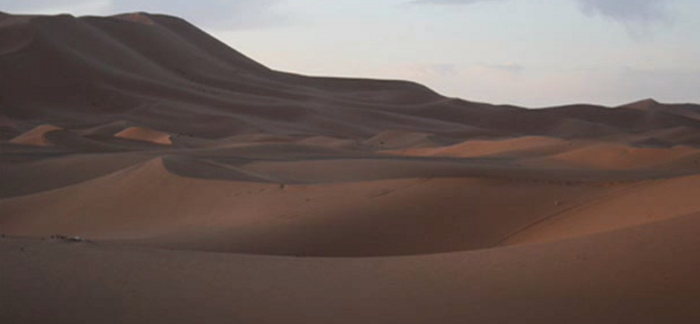The Sahara Desert is the one of the largest deserts on the planet today. It stretches across the entire northern part of Africa, stretching from the Atlantic all the way to the Red Sea. Almost all of the northern portion of the continent is covered by this desert. Its name is quite likely a reflection of its size. In Arabic, the world “sahara” actually means “desert.” This means it is actually called the “Desert Desert.” It’s a fitting name.
1. Big… But Not the Biggest
The Sahara is pretty big, but it isn’t the biggest desert on the planet. That’s because there can be hot and cold deserts where life struggles to grow. Because of this fact, Antarctica is technically a larger desert than this icon of North Africa. One day, however, the Sahara may actually get the title of being #1. It’s still growing every day, expanding by over 3.5 million miles in the last 60 years. On the other hand, the desert in Antarctica is growing smaller as the planet heats up.
2. Hello America
How big is the Sahara? If you could take the entire continental United States and place it inside the Sahara Desert, it would fit completely. It wouldn’t be like trying to fit into a pair of skinny jeans either. It’s so big that there would still be several thousands square miles of desert that would border the continental US after it was moved. In total, 11 countries exist in-part within the Sahara Desert.
3. Is Anyone Home?
Although the Sahara Desert is incredibly large, it is remarkably vacant. The weather conditions make it virtually impossible for life to thrive there. In total, just 2 million people call this region home. When compared to the United States, this means that there are 150 Americans in the same amount of space for every 1 person that calls the Sahara Desert their home.
4. Changing Seasons
Even though North Africa is now a hot, arid desert, it wasn’t always that way. Scientists have discovered several cave records that show the region was actually very fertile farm land. It is believed that millet was commonly grown in the area. Some of the images that have been recovered show that the lands were actually thriving and very green. That’s a stark comparison when compared to what we can see in satellite images today.
5. Hot? Maybe Not
The Sahara Desert has a reputation for being extremely hot, but there are times during the year when the opposite is quite true. From December through February, the Sahara will often have temperatures that plunge below the freezing mark. It can get cold enough that frost will form on the tops of the sand dunes and there are times when it will even snow in the desert.
That’s not to say that it won’t get hot in the Sahara when the time is right. One of the hottest temperatures ever recorded on the planet occurred in Libya in the early 20th century, peaking near 140F.
6. Take a Break, My Friend
It would be unfair to say that there aren’t some nice locations within the Sahara Desert. There are a number of places where ground water flows freely underneath the arid soil. Sometimes these rivers run close enough to the surface that they can feed plants and provide a place of refuge. 98% of the Sahara might be sand and dust, but the other 2% has thriving life.
People are also starting to transform the Sahara artificially. Irrigation is making it possible to turn the arid land back into soil that can grow grains and millet once again. This is especially true along the Nile River, which has traditionally helped to provide life, either through the annual floods or the power it provides now that it is dammed up.
7. Toughen Up
The most difficult race in the world today is held in the Sahara Desert. It’s the Sahara Marathon and it occurs in Morocco every year. It has such a long waiting list that people need to sign up several years in advance if they wish to race in it. The race is a 7 day event that has 6 different stages. Racers carry all of their supplies and cover over 150 miles.
The traction for racers is relatively good. The great sand dunes of the Sahara might be picturesque, but most of the desert isn’t actually sand. It’s gravel. Estimates show that only about 30% of the Sahara is actually made up of sand.
The Sahara Desert might be one of the most inhospitable places on the planet, but life still finds a way to thrive. That may be what is most remarkable about one of the largest deserts in the planet.




